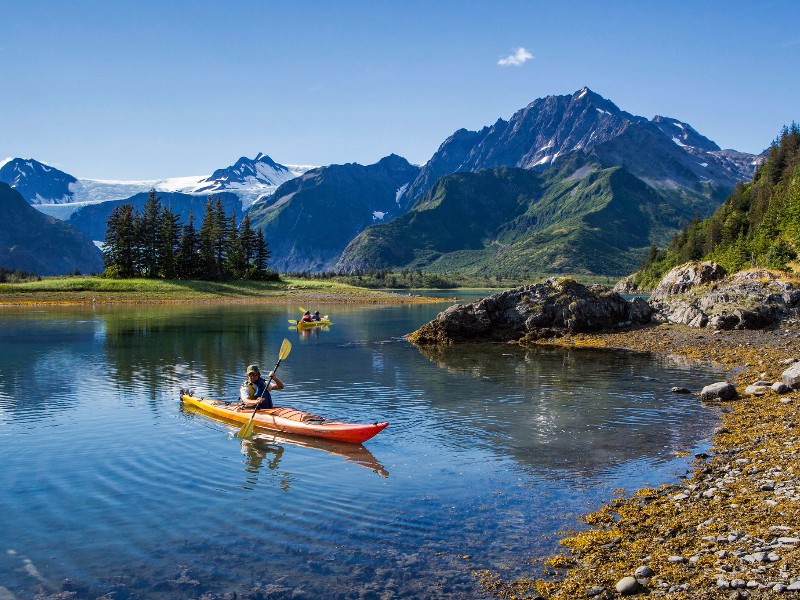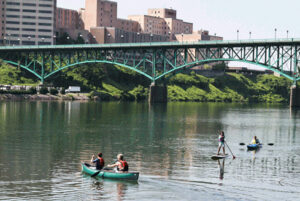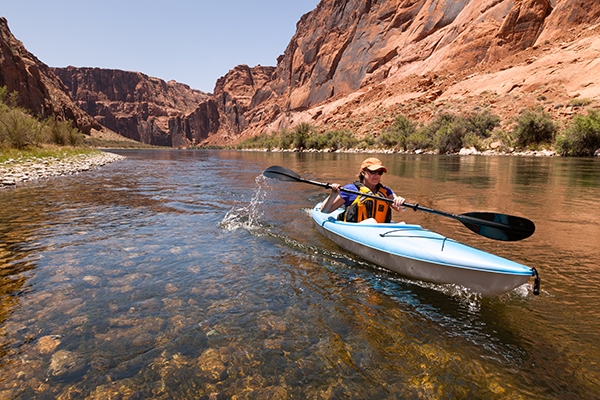Since the start of American history, rivers have served a significant mission in transforming the United States from a developing country to a modernized and flourishing nation. These significant rivers, coursing throughout the country, provided a mechanism for exploring distant zones, transporting goods for trade, and also providing water for arid communities, particularly during the westward migration. Rivers, notwithstanding their contributions to the development of American cities, have sadly been wrecked, polluted, and flooded (due to poorly built dams), with multiple of the natural ecosystems contaminated or wholly destroyed. While the US has made some reforms to protect these waterways, these issues are still alive and well. Although many rivers remain vulnerable, naturalists, artists, and lovers of the great outdoors can always take enjoyment of the natural beauty that resonates throughout our nation. For the most spectacular rivers in the US, read on.
The Kenai, Alaska
Could you think of a more picturesque waterway? The Kenai River, located in south-central Alaska, boasts turquoise waters rushing into the alpine forests set against a snow-capped, mountainous region. The river, a ‘meltwater’ river created by melted glacial ice, goes for 82 miles from the Kenai Lake to the Cook Inlet on the Pacific Ocean. The area is home to abundant wildlife – expect to see moose and caribou grazing beside its edges – and has attracted people for thousands of years as an excellent region for fishing.
Columbia River, Oregon
The Columbia River, the biggest river in the Pacific Northwest, travels a whole 1,234 miles from British Columbia, into Washington, and into Oregon before draining into the Pacific Ocean. Boasting deep-blue colors, the river is fully seen from the Columbia River Gorge in Oregon. A host to several species of fish that move between the salt waters of the Pacific Ocean to the freshwaters of the river waters, the Columbia has played a crucial role in the development of the western US as a center for fishing and fur trade. While the river has so far been polluted and environmentally wrecked, its beauty still resonates beside the steep cliffs, verdant forests, and rolling hills that border it.

Hanalei River, Hawaii
The Hanalei, found on the island of Kauai, runs from the peaks of 3,500-foot-high Mount Waialeale down to the Hanalei Bay in the Pacific Ocean, traveling within lush tropical forests, various taro farms, and into the Hanalei National Wildlife Refuge. Journey down its waters on a kayak for a vision of the island’s epic flora – all gratitude to the record-breaking rainfall it receives yearly, the highest in the world – before exhausting a day on the shores of its beautiful bay.
Hudson River, New York
The Hudson has been a popular waterway since the early 1600s when navigator Henry Hudson stumbled upon its magical waters, later on serving as a gateway to the center of the US that created some competition between the English and Dutch for administration. The beauty of the Hudson river was so captivating that its agrarian landscapes led to its own style of artwork – known as the Hudson River School – and worked as an inspiration for writer Washington Irving’s short stories. Rising in the Upstate Adirondack Mountains, the river runs through the Hudson Valley until it enters the Atlantic Ocean, working as the boundary between New York and New Jersey. While the Hudson makes for a stylish Manhattan photo op, the river is best seen in its eastern part corners, where it’s enclosed by serene wilderness and leafy foliage.
Colorado River, Arizona
Aquamarine waters, Rushing Rapids, and steep canyon walls are what makes this big river’s beauty unparalleled. Accountable for carving out the red-tinged walls of the famed Grand Canyon many thousands of years ago, the Colorado River is a preference amongst naturalists and photographers, possessing dramatic canyons and serene desert scenes. To best experience, its natural elegance, book a rafting excursion or multi-day hike alongside the canyon floors or even opt for one of the several other points along with its 1,450-mile-long range from the Rockies to Mexico.
Snake River, Wyoming
Flowing for more than 1,000 miles through Idaho, Wyoming, and Washington, the Snake River boasts some of the most scenic views of the countryside in the country, surrounded by rolling plains, rugged mountains, and deep valleys – the outcome of glacial erosion in the last Ice Age. As the biggest tributary of the Columbia River, the Snake River presents many opportunities to experience its attraction along its route from the Yellowstone National Park through Idaho Falls, Boise, Jackson, Twin Falls, and Lewiston; the best views, though, come from Hells Canyon – a deep gorge near the borders of Idaho, Oregon, and Washington.
Rio Grande River, Texas
The Rio Grande, flowing a total of1,896 miles from south-central Colorado into the Gulf of Mexico, is sorrowfully diminishing in different parts – including the segment from El Paso to Ojinaga – due to drought conditions and over-appropriation between New Mexico,Colorado, and Texas, with only 20 percent of its natural outflow emptying into the Gulf. While the river remains endangered by pollution and deterioration, its attraction can still be enjoyed in Texas’s Big Bend National Park, wherever the deep blue waters flow freely.
Tennessee River, Tennessee
Famed for its naming in the 1979 novel Suttree and country music performer Alabama’s song ‘Tennessee River,’ this stream has been an important route for boat travel since the late 17th century when the river was used as a major highway for transporting goods and travelers – many of which lived along its banks. Once the ‘River of the Cherokees,’ this river springs at the confluence of the Holston and French Broad rivers where it goes on to flow for 652 miles before connecting with the Ohio River in Kentucky region. As part of the Great Loop, this River provides for the circumnavigation of the southeastern United States by cutting the trip to the Gulf by hundreds of miles.



